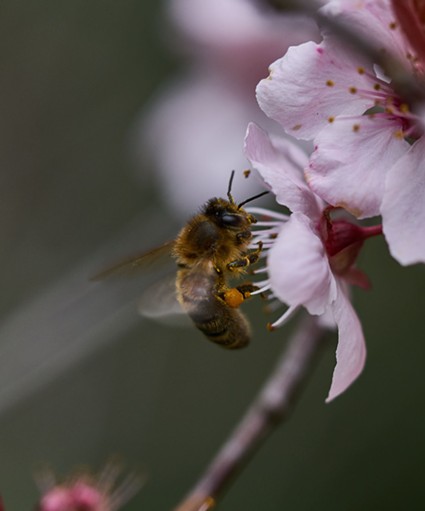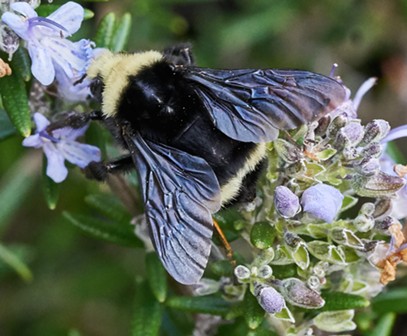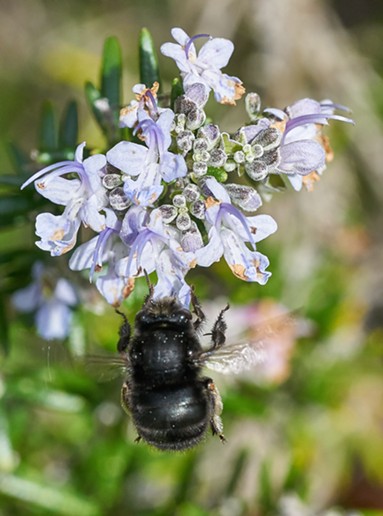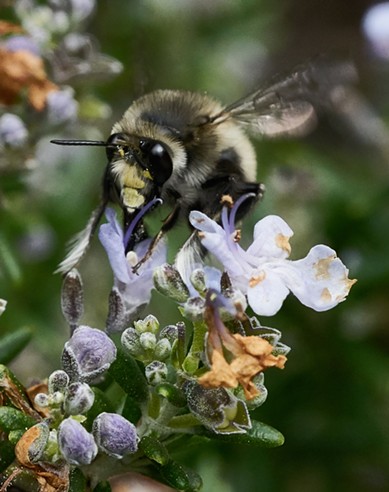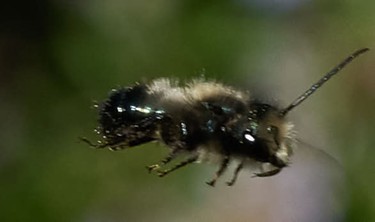Sunday, March 19, 2017
HumBug: In the Key of Bee
Posted By Anthony Westkamper on Sun, Mar 19, 2017 at 3:00 PM
We've finally had three days of warmish weather and the garden is abuzz with the sounds of busy bees. If you listen carefully, you can hear each species with its own pitch and rhythm. There is, of course, the familiar drone of the honeybee and the heavy bass of the yellow faced bumble bee (Bombus vosnesenskii). This is the biggest bee I've seen in my yard and the one with the lowest pitch. This species is actually reared commercially to pollinate certain crops which do best with something called “buzz pollination.” Tomatoes, for example, do not release their pollen unless the blossoms are vibrated at a certain frequency. Honeybees just can't do it as well as these guys.
A counterpoint to the above fairly relaxed themes are the large carpenter bees (genus Xylocopa). As big or nearly as big as bumblebees, these are glossy black and much more and active, quickly zipping from one blossom to another even feeding while on the wing. The ones in my yard are not so big as the biggest bumblebees I've seen, but significantly larger than honeybees.
Even more allegro are the mining bees, (Anthrophora pacifica). The same size as those carpenters, these hirsute ladies and gents take the cake for quickness, making getting a good shot all the more difficult.
I'm working on identifying numerous smaller, quieter bees that lend their distinctive higher pitched voices to the choir. Although I'm learning to tell them apart I don't know of any references which use sound to identify them.
Speaking of...
-

Equinoctial To-Do and Native Plants
Sep 21, 2023 -
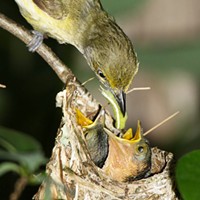
Gardening for Caterpillars?
Dec 15, 2022 -

California Poised to Restrict Bee-killing Pesticides
Jul 20, 2022 - More »
Readers also liked…
more from the author
-
HumBug: Early Spring Pollinators
- Apr 12, 2020
-
HumBug: A Recipe for History
- Apr 5, 2020
-
HumBug: Bugs in the City
- Mar 29, 2020
- More »
